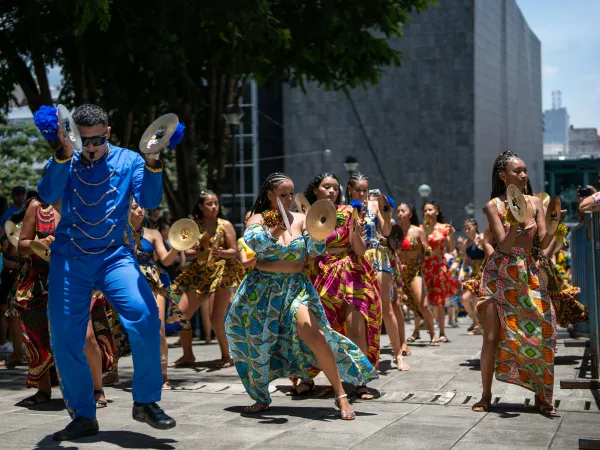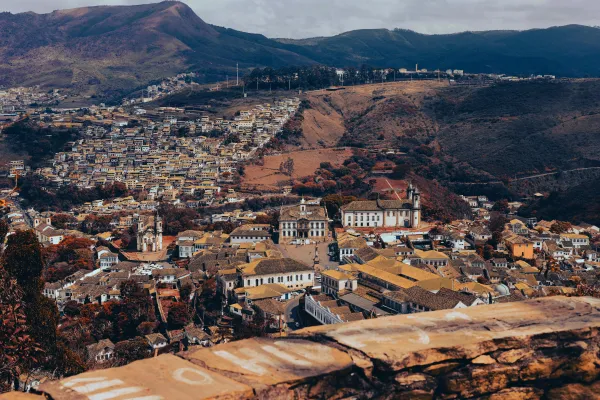18 Things To Do In Dana Point That Are Rare Outside SoCal
There’s something different about Dana Point. It’s not just the perfect beaches or the migrating whales. It’s the way this seaside town makes you feel like you’ve stepped into a slower, saltier version of Southern California—one with fewer crowds, more soul, and just enough adventure to keep your sandals sandy for days.
Perched between Laguna Beach and San Clemente, Dana Point has long been a hidden favorite for surfers, sailors, and weekend wanderers. It was once described by author Richard Henry Dana as the “only romantic spot on the coast,” and nearly 200 years later, that still rings true.
From tide pool adventures and surf lessons to harborfront dining and historic hikes, here are 18 unforgettable things to do in Dana Point right now—especially if you’re craving something both peaceful and wild, polished and raw, all wrapped in sea spray and sunshine.
1. Go Whale Watching – Dana Point's Signature Experience
If there’s one thing you have to do in Dana Point, this is it. Whale watching here isn’t a tourist gimmick—it’s the heartbeat of the city. This stretch of the Southern California coast has been called the “Whale Watching Capital of the World,” and for good reason. The geography of the Dana Point headlands forms a natural corridor for migrating whales, drawing gray whales in winter and spring, and blue and humpback whales in summer and fall.
Tour companies like Capt. Dave’s Dolphin & Whale Watching Safari and Dana Wharf Sportfishing & Whale Watching run daily cruises with marine biologists on board. These aren’t just boat rides. They use hydrophones so you can hear whale songs in real time. Capt. Dave even pioneered underwater viewing pods, where you can literally come face-to-face with the sea giants.
You’ll likely see dolphins too—sometimes in pods that number in the hundreds. And in March, the city hosts the annual Festival of Whales, a community-wide celebration of this incredible migration. When you’re out there, watching a 50-foot whale breach the surface, you realize this isn’t just a destination—it’s a front-row seat to one of nature’s greatest shows.

2. Visit Dana Point Harbor – The Heart of the City
Dana Point Harbor isn’t just where boats dock—it’s the pulse of the community. Built in the late 1960s, the harbor transformed the area from sleepy beach town to coastal hub. Today, it’s a lively mix of waterfront restaurants, boutique shops, art galleries, and excursion companies offering everything from parasailing to stand-up paddleboarding.
It’s also home to the historic replica of the Pilgrim, a brig ship once used for educational programs inspired by author Richard Henry Dana, whose 1834 voyage gave the town its name. While the Pilgrim was sadly lost in 2020 due to hull damage, the harbor still carries his legacy through interpretive signs and exhibits near the Ocean Institute.
Families love Baby Beach, a calm-water cove perfect for younger swimmers, while boaters can charter everything from fishing trips to sunset sails. Hungry? Dockside dining at places like Wind & Sea or The Harbor Grill serves fresh seafood with a view that’s hard to beat.
From early morning kayakers to evening strollers watching the sky turn pink, the harbor buzzes with energy at any hour. It’s not just a place to visit—it’s where Dana Point truly comes alive.
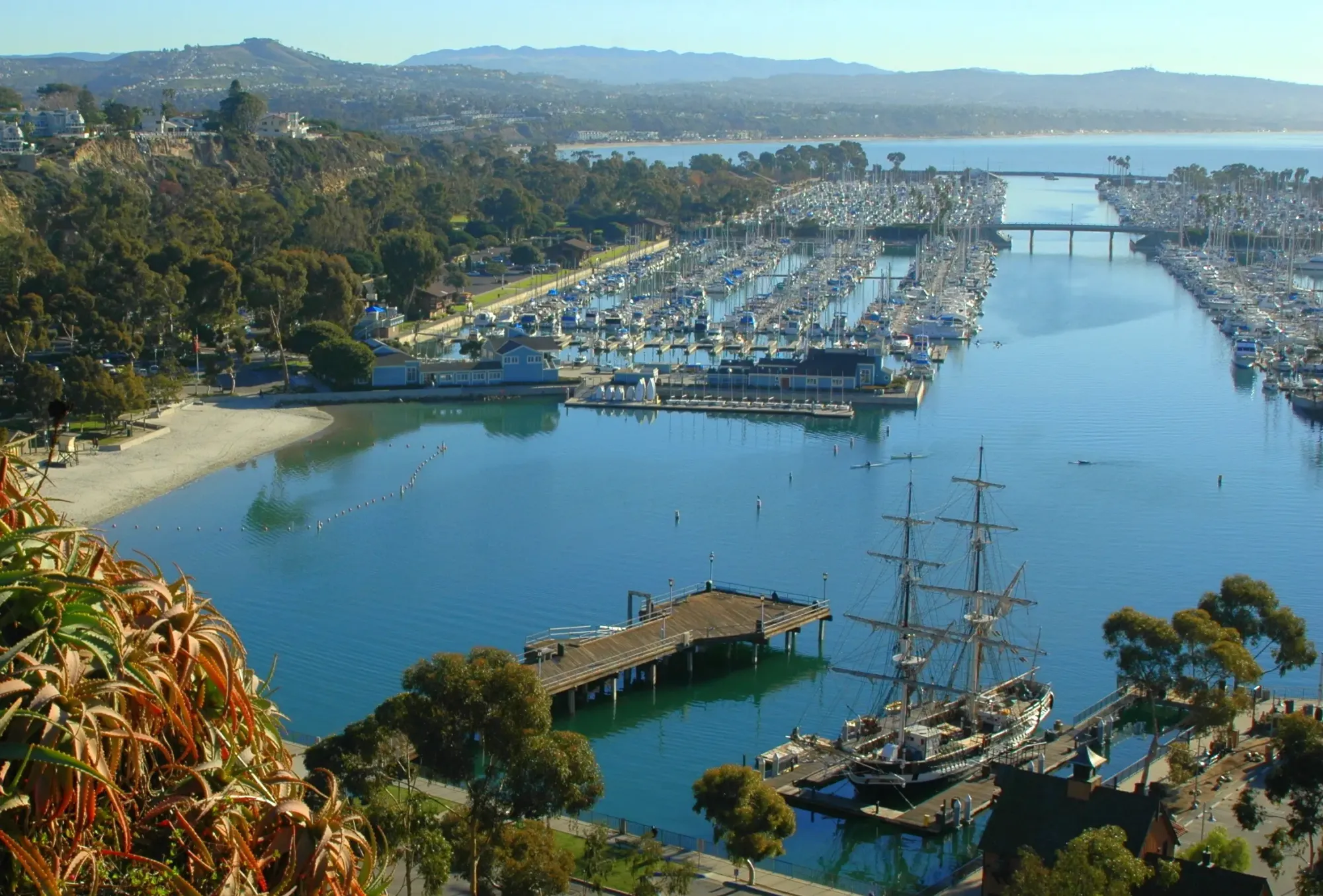
3. Relax at Salt Creek Beach (Local Favorite!)
If Dana Point had a greatest hits album, Salt Creek Beach would definitely make the cover. This wide, sandy beach is beloved by locals and travelers alike—not just for its consistent surf breaks, but for its laid-back vibe and killer views. It sits just below the Ritz-Carlton, Laguna Niguel, but the beach itself feels worlds away from any sense of pretension.
In the 1960s and ’70s, Salt Creek became a proving ground for Orange County surfers. The right-hand reef break here is still considered one of the best in the region. But you don’t have to surf to love it. There’s a grassy bluff perfect for picnics, a paved trail that’s stroller- and bike-friendly, and a long stretch of shoreline that’s ideal for morning walks or sunset photos.
Lifeguards are on duty year-round, and there’s a seasonal snack bar for beachside bites. The gentle slope of the sand makes it great for bodyboarding and wading, especially in summer.
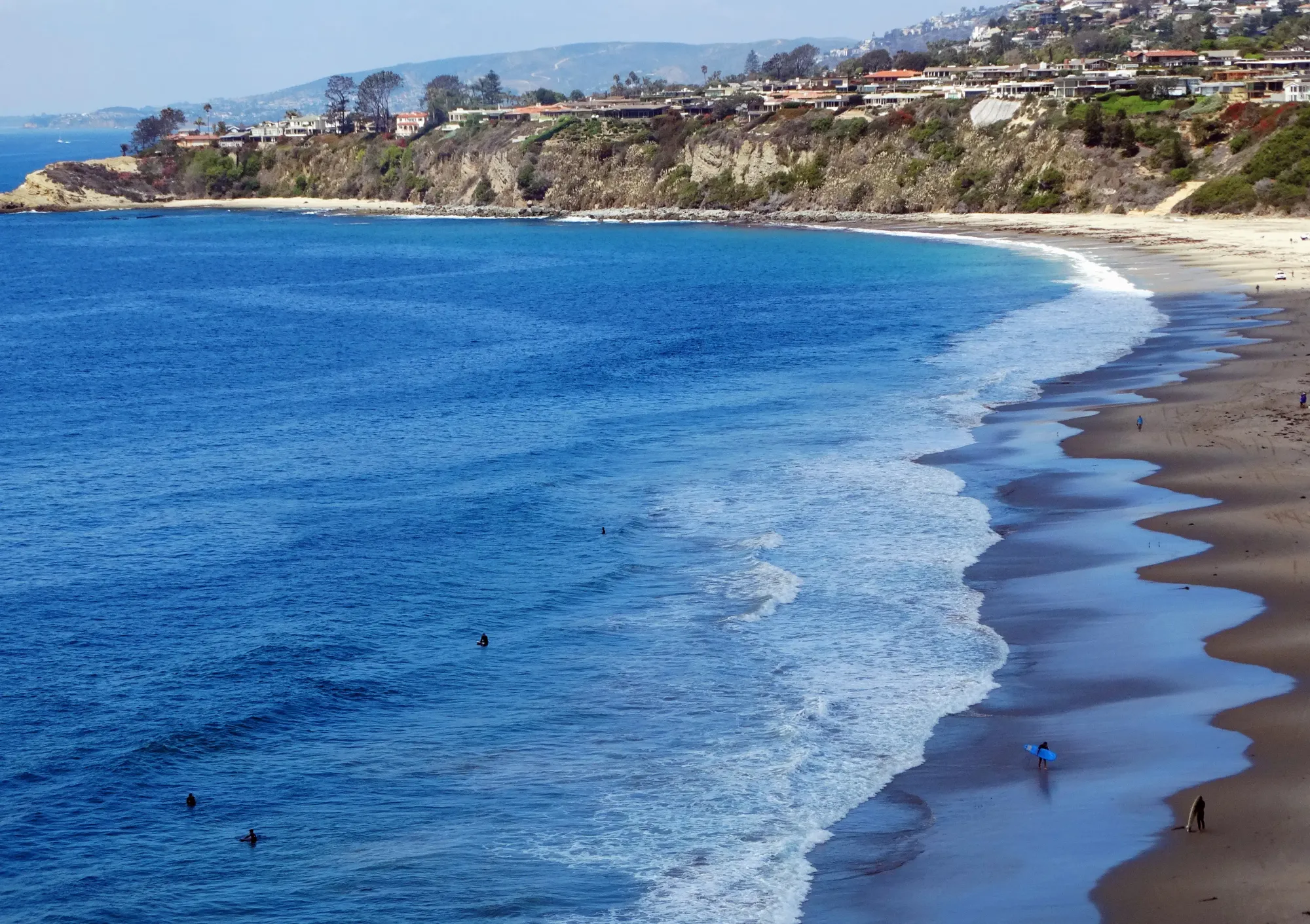
4. Hike the Bluff Top Trail for Breathtaking Ocean Views
This short but scenic trail packs a visual punch. The Bluff Top Trail runs about a mile between Dana Point Harbor and the Dana Point Headlands, hugging the coastline with nonstop ocean views. It may be one of the easiest hikes in town, but it’s also one of the most rewarding.
As you stroll the path lined with native plants and interpretive signs, you’ll pass viewpoints that look straight out of a postcard. Keep an eye out for Catalina Island on clear days and migrating whales offshore during winter and early spring. The area was once the stomping grounds of Richard Henry Dana, who described the cliffs in Two Years Before the Mast as “the only romantic spot in California.” The city took that to heart—there’s even a bronze statue of Dana looking out to sea along the trail.
Benches along the way invite you to slow down, breathe in the salty air, and maybe catch a sunset you’ll be bragging about for months. It’s a perfect low-effort, high-reward walk that locals use as a daily ritual and visitors remember as a highlight. Comfortable shoes optional—but curiosity is definitely required.
5. Explore the Ocean Institute – A Hands-On Marine Science Experience
Tucked at the far end of Dana Point Harbor, the Ocean Institute is one of those rare spots that manages to be educational and fun without feeling like a school field trip. Founded in 1977, it’s a nonprofit that turns kids and adults alike into amateur oceanographers—if only for the afternoon.
The Institute sits where the land meets the sea, with exhibits focused on tidepools, marine mammals, oceanography, and maritime history. You can peer into touch tanks, watch squid dissections (not as gross as it sounds), and learn how ocean currents affect global weather patterns. Their Maddie James Seaside Learning Center even lets visitors get up close with sea stars, urchins, and sometimes baby sharks.
The Ocean Institute also operates tall ship sails and eco-adventures that let you explore the ocean the old-fashioned way—on deck, wind in your face, sails above your head. It’s especially popular during the Festival of Whales and Tall Ships Festival, two local traditions that turn the harbor into a living museum.
It’s not a huge place, but it leaves a big impression. Ideal for families, curious travelers, or anyone who ever dreamed of being Jacques Cousteau for a day.

6. Watch the Sunset at Lantern Bay Park
Lantern Bay Park is where you go when you want to press pause. Perched above Dana Point Harbor, this peaceful green space offers sweeping views of the Pacific and a front-row seat to some of the best sunsets on the Southern California coast.
The park gets its name from the street it borders—Golden Lantern—and nods to Dana Point’s old-timey street-naming system, inspired by maritime lantern colors. That nautical legacy still lingers in the park’s vibe. You’ll find walking paths, shaded picnic tables, and plenty of open space for yoga, frisbee, or just lying back and watching the sky turn from gold to purple.
Locals come here with coffee in the mornings and picnic blankets in the evenings. It’s also a popular spot for casual weddings, engagement photos, and weekend hangouts. Bonus: there’s a small playground, so parents can relax while the kids burn off some energy.
If you're lucky, you might spot whales breaching offshore or a pod of dolphins slicing through the water. Even on quiet days, there’s a calmness here that feels earned. Bring a blanket, your favorite snacks, and someone you like being silent with. The sky will take care of the rest.
7. Take a Surf Lesson at Doheny State Beach
Doheny State Beach isn’t just where people learn to surf—it’s where surf culture was practically born. This iconic beach, just south of Dana Point Harbor, was one of California’s first state beaches (dedicated in 1931) and has been attracting wave riders for nearly a century. In the 1950s and ‘60s, it became a gathering spot for longboarders, immortalized in surf films and Beach Boys lyrics.
Today, it’s still one of the best places in SoCal for beginners. The waves are gentle, the bottom is sandy (not rocky), and local surf schools make it easy to get started. Lessons typically include everything you need—board, wetsuit, and a patient instructor who won’t judge your wipeouts. Expect to laugh a lot and maybe even stand up by the end of your first session.
Even if you’re not ready to paddle out, the beach is a great hangout spot. There are shaded picnic areas, volleyball courts, and walking trails along the San Juan Creek. Dolphins often cruise by just offshore, and tidepools near the jetty offer fun for little explorers.
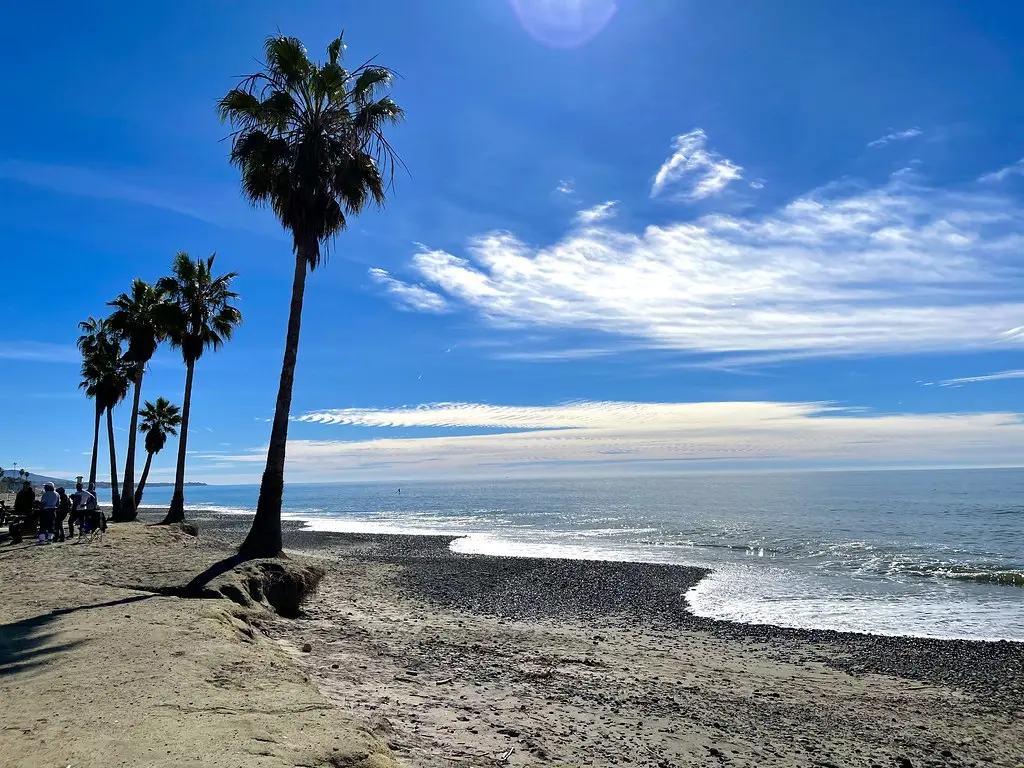
8. Hike to the Dana Point Sea Cave
Hidden below the cliffs of Dana Point lies one of the area’s coolest natural features—a sea cave that only reveals itself at low tide. It’s not on every map, and that’s part of the adventure. Getting there takes a bit of planning and a solid pair of shoes, but the payoff is a one-of-a-kind slice of coastal geology.
To reach it, head to the beach access at the bottom of the stairs near the Ocean Institute. From there, walk south along the rocky shoreline, carefully navigating tide pools and boulders. The cave entrance is carved into the base of the cliff, and depending on tide levels, you can actually step inside. Just be sure to check tide charts—at high tide, the cave is inaccessible and potentially dangerous.
The hike is rugged but manageable, and you’ll pass an incredible array of marine life: sea anemones, crabs, and mussels clinging to rocks. The view from inside the cave looking out toward the ocean is pure magic—a photo opp that feels like a secret.
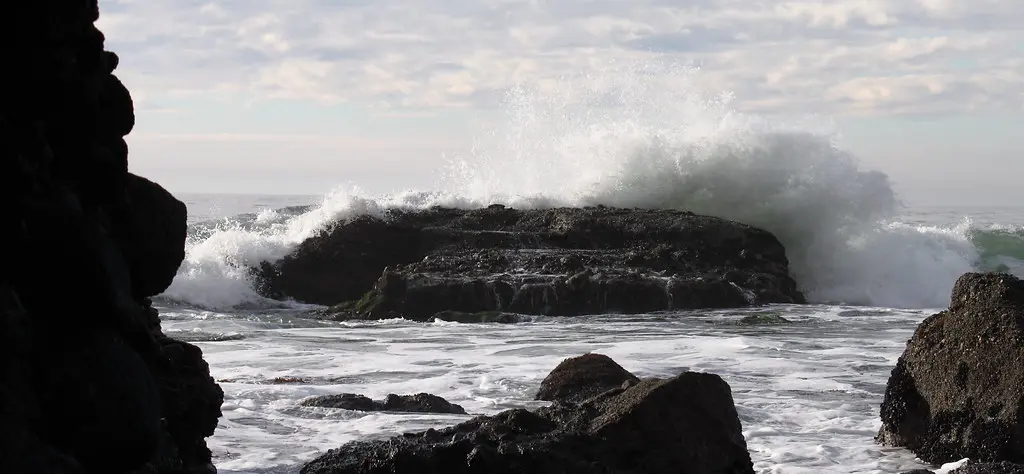
9. Cruise Along the Pacific Coast Highway (PCH)
There’s no better way to get a feel for Dana Point’s coastal charm than a slow cruise along Pacific Coast Highway—known to locals simply as “PCH.” This legendary stretch of road runs the length of California’s coast, and in Dana Point, it offers everything from vintage beach vibes to cliffside luxury in just a few scenic miles.
Start your cruise near Capistrano Beach and roll north through Lantern Village. You’ll pass surf shops, beach cafés, and glimpses of the Pacific peeking through neighborhoods perched on the bluffs. This isn’t a speedway—it’s a sightseeing lane. Windows down, music up, and nowhere to be but right here.
Pull off at scenic lookouts like the one near the Dana Point Headlands or park and grab a smoothie from a roadside shack. Don’t be surprised if you spot a classic woodie wagon or a parade of motorcycles enjoying the view.
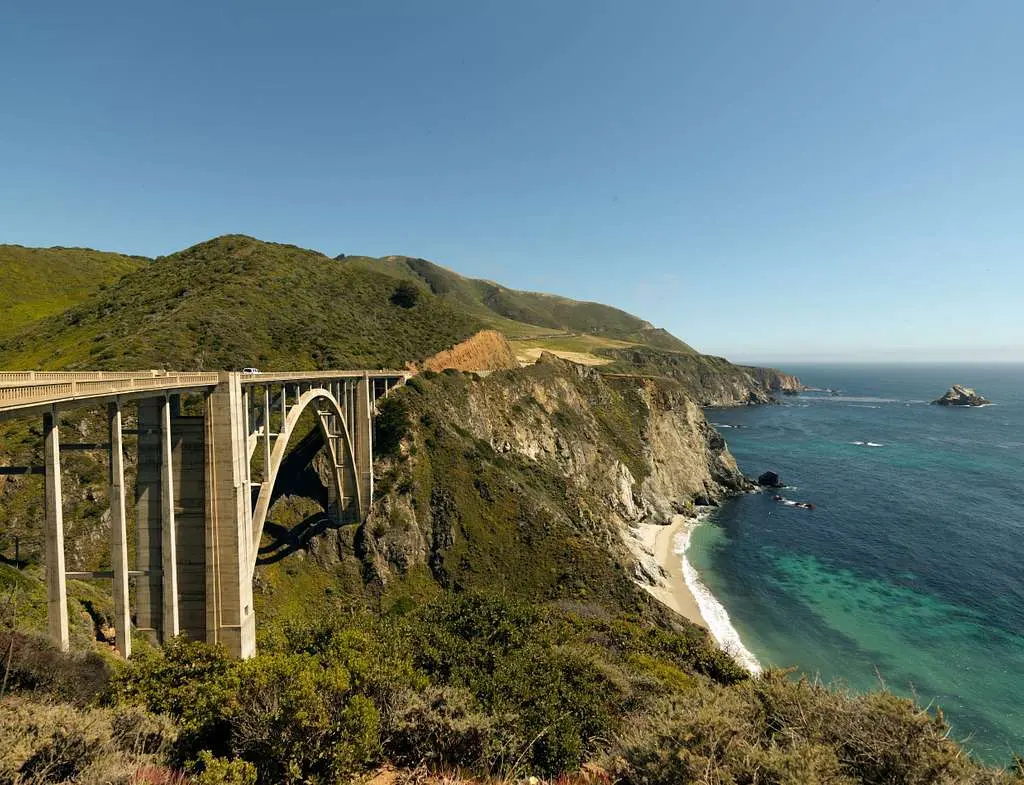
10. Dine at the Famous Coastal Restaurants
Dana Point’s dining scene is all about pairing fresh coastal flavors with front-row ocean views. This isn’t the place for chain restaurants and copy-paste menus. Instead, you’ll find longtime local favorites, family-run gems, and upscale spots where the seafood is as memorable as the sunset.
Start with Wind & Sea at the harbor—it’s been a go-to since 1972, known for its mai tais, fish tacos, and a patio so close to the water you might spot sea lions lounging nearby. Just around the corner, The Harbor Grill serves up seafood with a global twist—think swordfish tacos with wasabi slaw or blackened mahi with mango salsa.
For a special night out, head up the bluff to Raya at The Ritz-Carlton, where Chef Richard Sandoval’s Latin-inspired coastal cuisine pairs beautifully with views of Salt Creek Beach. Even the locals treat it like a mini vacation.
Casual options shine too. Coastal Kitchen on Del Prado is known for its laid-back vibe and killer crab cakes. And for brunch with a view, The Cannons—originally a military-themed steakhouse—still delivers on its iconic location above the harbor.
11. Visit the Dana Point Headlands Conservation Area
The Dana Point Headlands feel like a secret carved into the cliffs—a protected stretch of coastal bluffs where nature takes center stage. This 60-acre conservation area offers rare coastal sage scrub habitat, endangered wildlife, and some of the most sweeping views you’ll find in Southern California.
The Headlands were once slated for dense development, but after a long battle by local activists, much of the land was preserved for public use and environmental protection. Today, four interconnecting trails wind through the area, giving you access to lookout points, native plants, and interpretive signs that dive into the history and ecology of the land.
Keep your eyes peeled for California gnatcatchers, rabbits, and even red-tailed hawks soaring above. You can also visit the Dana Point Nature Interpretive Center, which offers free exhibits on the local ecosystem and Dana Point’s maritime past.
What makes this spot extra special is how quiet it is. Even on weekends, it never feels crowded.
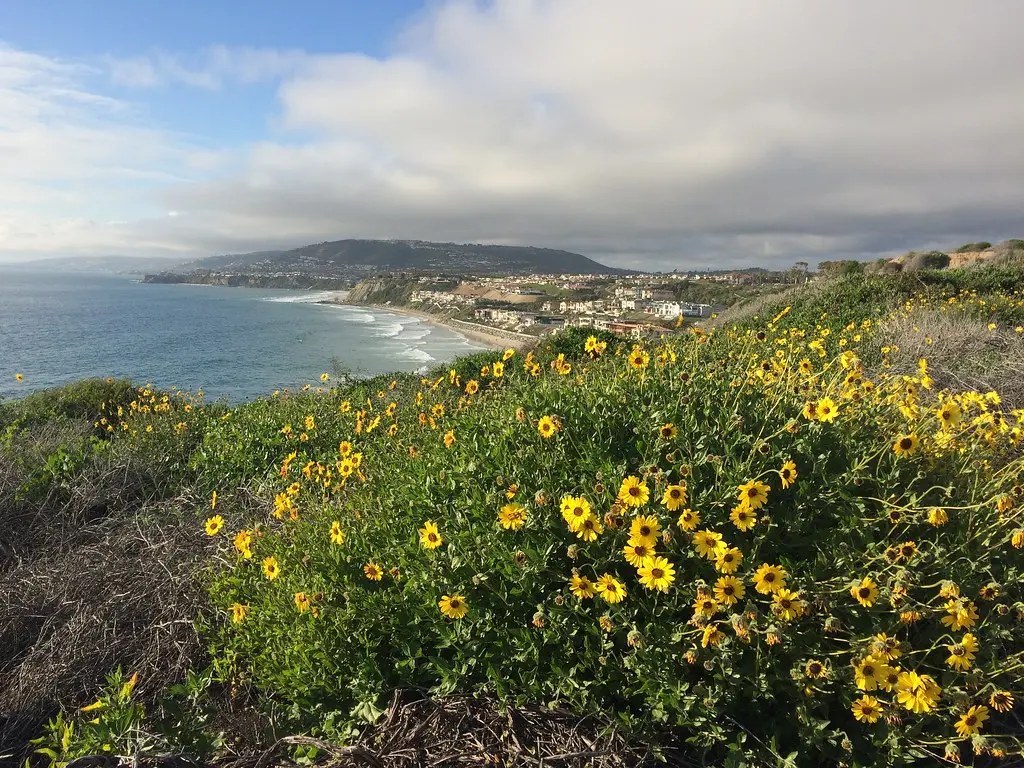
12. Explore Baby Beach – A Calm Water Paradise
If you’re traveling with kids—or just want a no-stress beach day—Baby Beach is the answer. Tucked into a protected corner of Dana Point Harbor, this small crescent of sand is known for its calm, wave-free waters and easygoing vibe. No riptides, no rough surf—just smooth, shallow water that’s ideal for splashing, paddleboarding, or floating the day away.
The beach gets its name from being a favorite for young families, and it lives up to the hype. There are shaded picnic areas, clean restrooms, and lifeguards on duty during peak seasons. Rentals for kayaks, SUP boards, and pedal boats are available right on the sand, so you can add a little adventure without straying far.
It’s also a great launch point for beginner paddlers who want to explore the harbor’s inner channels—expect to see sea lions, pelicans, and maybe even a curious harbor seal or two.
Weekdays are especially peaceful, but even on busy weekends, the atmosphere stays relaxed. If you’re craving a no-fuss beach experience where everyone from toddlers to grandparents can unwind, Baby Beach is Dana Point’s low-key superstar. Bonus: parking is nearby, and the views of the harbor’s boats bobbing in the sun never get old.
13. Attend the Festival of Whales (March Event!)
Every March, Dana Point throws a party for the ocean’s most majestic travelers: the migrating gray whales. The Festival of Whales has been a local tradition since 1971, making it one of the longest-running whale celebrations in the world. But it’s more than just boat tours—it’s two weekends of parades, art, music, food, and community spirit, all set against the backdrop of peak whale-watching season.
The festival honors Dana Point’s role in marine conservation and its deep connection to whale migration. You’ll find guided whale-watching cruises (offered at discounted festival rates), educational talks by marine biologists, and interactive exhibits at the Ocean Institute. Families love the Whale Parade, featuring local school groups, floats, and music that marches right through the harbor area.
Kids can participate in crafts and touch tanks, while adults enjoy harbor-side wine tastings, sand sculpting contests, and live concerts. Some years even include a classic car show and a stand-up paddleboard race.
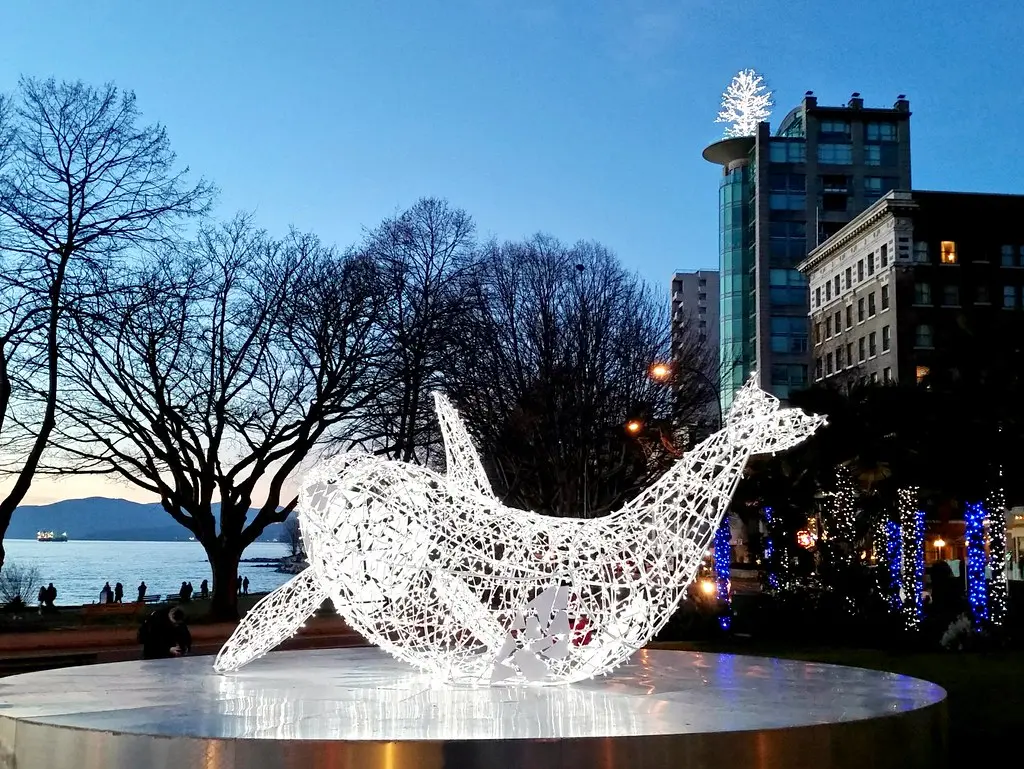
14. Book a Private Sailing Adventure
If watching the ocean from land isn’t enough, why not set sail on it? Booking a private sailing charter in Dana Point gives you a chance to experience the coastline the way it was meant to be seen—wind in your hair, sun on your face, and dolphins racing alongside the bow.
Local charters like Aventura Sailing and Westwind Sailing offer a range of options, from romantic sunset sails to family-friendly daytime excursions. Whether you’re celebrating something special or just want a break from the typical beach day, these personalized trips bring a whole new perspective to Dana Point.
Most boats depart from Dana Point Harbor and head out past the breakwater into open waters where whales, dolphins, and seabirds often make an appearance. You can choose to kick back and let the crew handle everything, or—if you're curious—they’ll let you take the helm and learn a few sailing basics along the way.
15. Explore the Hidden Tide Pools at Dana Strands Beach
Exploring the hidden tide pools at Dana Strands Beach is a must-do activity for nature lovers and adventure seekers in Dana Point. Tucked beneath the scenic bluffs near The Strand at Headlands, this beach offers a secluded and less crowded experience compared to other coastal spots. At low tide, the rocky shoreline reveals an incredible world of colorful sea anemones, hermit crabs, starfish, and even the occasional octopus hiding among the rocks.
To reach the tide pools, take the Strands Beach funicular (elevator) or the scenic staircase down to the sand. From there, walk north along the shore to find the best tide pools nestled against the cliffs. The best time to visit is during a negative or very low tide when the ocean recedes far enough to expose these fascinating marine ecosystems.
Since the tide pools are part of a protected marine conservation area, it's important to follow "look, don’t touch" guidelines to help preserve the delicate sea life. Wearing sturdy water shoes is also recommended, as the rocks can be slippery.
16. Capt. Dave's Dana Point Dolphin & Whale Watching Safari
Few places on the West Coast offer a better front-row seat to the ocean’s wild side than Dana Point—and nobody brings it to life like Capt. Dave. His Dolphin & Whale Watching Safari goes far beyond sightseeing. It's a full-blown immersion, from the moment you board the catamaran to the second you lean into the underwater viewing pod and lock eyes with a 50-ton gray whale. Dana Point’s geography creates a natural marine corridor, making it a prime migration path for blue whales, gray whales, and thousands of dolphins.
What makes this tour special is how much heart it has. Captain Dave has been fighting for marine conservation for decades, even producing award-winning documentaries and rescuing whales entangled in fishing gear. His boat, the Manute’a, features 360-degree viewing decks, underwater hydrophones to hear whale songs in real-time, and a small onboard kitchen serving fresh-baked brownies—a crowd favorite.
Dana Point became the first Whale Heritage Site in the U.S. in 2021, recognizing its deep-rooted connection to marine life. This isn’t just a boat ride—it’s part science expedition, part coastal storytelling. Bring your camera, but also bring your curiosity. The Pacific here doesn't keep secrets for long.
17. Luxury Above the Pacific: The Ritz-Carlton, Laguna Niguel
Perched above the crashing surf of Salt Creek Beach, The Ritz-Carlton, Laguna Niguel is where California luxury meets coastal history. Since opening in 1984, it’s attracted everyone from Hollywood stars to world travelers seeking out the best of Orange County. But the land it sits on tells its own story. Once part of the massive Rancho Niguel Mexican land grant in the 1800s, this blufftop was used for grazing cattle long before it became a luxury escape.
Inside, the hotel offers everything you'd expect—world-class dining, oceanview suites, spa treatments scented with native sage—but it’s the views that stop people in their tracks. On a clear day, you can see Catalina Island glowing in the distance. Down below, Salt Creek Beach rolls out a stretch of golden sand that’s been a surfing hotspot since the 1960s, especially among longboarders who still swear by its reef break.
The Ritz also honors its surroundings. You’ll find rotating local art exhibits, eco-conscious programs, and partnerships with marine research organizations.
18. Capistrano Beach Park: A Laid-Back Slice of Coastal History
Capistrano Beach Park doesn’t try to compete with flashier spots up the coast—and that’s exactly why people love it. Before it was a beach for locals and road-tripping families, it was part of Rancho Boca de la Playa, a Mexican land grant dating back to the 1840s. Even its modern name carries weight. “Capistrano” links it to nearby Mission San Juan Capistrano, founded in 1776 and still ringing its bells today.
The beach itself is the kind of place where flip-flops hit pavement, seagulls circle fish tacos, and you’re never far from someone flying a kite. A wooden boardwalk curves along the shore, often dotted with sunset photographers and teens on beach cruisers. It’s a slower rhythm here—think ice cream stands, volleyball courts, and tide pools filled with scuttling hermit crabs.
In the early 20th century, Capistrano Beach became a popular stop along the Pacific Coast Highway, with a beach colony of quaint cottages and surf shacks. Some remnants still linger, adding character you won’t find at glossier spots. It’s also a solid spot for whale sightings during migration season. If you’re craving simplicity with a view, Capo delivers—no reservations or reservations required.
Conclusion
Dana Point is a coastal gem that perfectly blends outdoor adventure, relaxation, and breathtaking scenery. Whether you're watching the sunset at Lantern Bay Park, catching waves at Doheny State Beach, exploring hidden sea caves, or embarking on a private sailing excursion, this charming seaside city offers something for every type of traveler. Whale watching, hiking, dining at waterfront restaurants, and cruising the Pacific Coast Highway only add to the unforgettable experiences found here.
With its laid-back vibe and stunning oceanfront setting, Dana Point is more than just a stop along the California coast—it’s a destination that invites visitors to slow down, soak in the beauty, and embrace the spirit of the sea.
Planning to visit? Karta has some amazing Dana Point vacation rentals for you.
FAQs
1. What are the must-see attractions in Dana Point?
Dana Point is famous for its scenic harbor, the striking Dana Point Headlands, and beautiful beaches (including Doheny State Beach). Visitors also enjoy whale-watching tours, exploring the Ocean Institute, and taking part in local events like the annual Festival of Whales.
2. What water activities can I enjoy in Dana Point?
The city is a haven for water sports. You can go surfing, paddleboarding, kayaking, sailing, or take a guided whale and dolphin-watching tour. The harbor is also popular with anglers and boating enthusiasts.
3. What is the weather like in Dana Point?
Dana Point boasts a mild Mediterranean climate with warm, sunny summers and cool, comfortable winters—ideal for outdoor and water activities nearly all year round.
4. When is the best time to visit Dana Point?
While Dana Point is attractive year-round, many visitors choose to visit during the peak whale-watching season (January to March) when the annual Festival of Whales is held. Summer is also popular for enjoying the beaches and water sports.
5. How do I get to Dana Point?
Located in Orange County, Dana Point is conveniently positioned roughly midway between Los Angeles and San Diego. It’s easily accessible by car via the Pacific Coast Highway (California State Route 1) or Interstate 5.
6. What family-friendly activities are available in Dana Point?
Families can enjoy a variety of activities such as safe beaches for swimming and tide pooling, educational tours at the Ocean Institute, harbor cruises, and outdoor parks. The laid-back coastal vibe makes it a welcoming destination for visitors of all ages.
7. What types of accommodations can I find in Dana Point?
Dana Point offers a range of lodging options—from charming beachside hotels and cozy inns to luxury resorts with ocean views and vacation rentals—catering to every budget and preference.
8. Are there any annual events or festivals in Dana Point?
Yes, Dana Point hosts several popular events. One of the most famous is the annual Festival of Whales, which celebrates the region’s rich marine life with boat parades, family-friendly activities, and a festive atmosphere.




